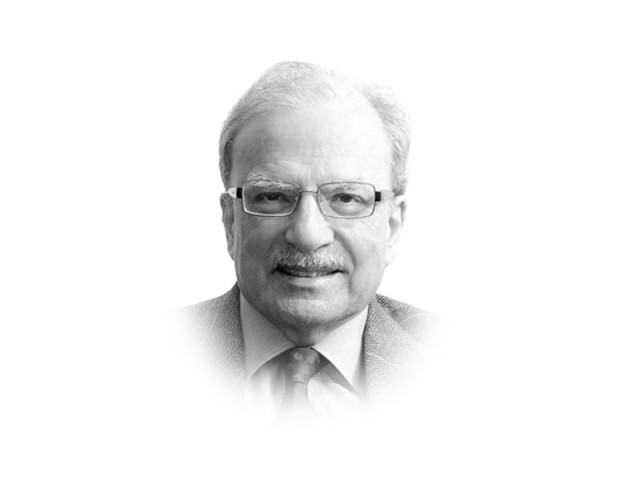US alliances in Asia
This time around, regional pacts are not being created by Washington to fight the developing cold war with China

There is a growing impression in the foreign policy community that the United States and China are heading towards a cold war situation. Some believe that they might be there already. The previous cold war involved the United States and what was then Union of Soviet Socialist Republic, the USSR. That particular conflict began when the Second World War ended, and the victors of that conflict began to position themselves in the emerging new world order. The United States was the richest country in the world. It had provided generous financial support to the European nations who had fought against the Nazi regime in Germany and the nationalist government that governed Italy. While the US had provided generous financial support, the USSR had lost the most people in the war.
To define the new world order, the United States convened a meeting in a resort town in the state of New Hampshire in the country’s northeast. What came to be known as the Bretton Woods Conference was attended by 44 countries in October 1944. It resulted in the creation of two financial institutions, the International Monetary Fund, the IMF, and the International Bank for Reconstruction and Development, the IBRD. The IBRD later developed into a multi-institution entity called the World Bank Group. The USSR, then governed by Josef Stalin, did not attend the Bretton Woods meeting and did not join the IMF and the IBRD.
The creation of the IMF and the IBRD was accompanied by the establishment of the United Nations in which the USSR was actively involved. Initially the UN had two institutions — the General Assembly that gave membership to all self-governing states; and the Security Council, with limited membership. Most war and peace decisions were to be taken by the Council in which five permanent members had the right to veto if the action to be taken did not meet their needs. The United States, the United Kingdom, China, France, and the USSR were the veto-exercising members of the Council.
On gaining independence on August 14, 1947, Pakistan applied for membership in the United Nations. Afghanistan was the only country to oppose the new nation’s application. Its reason for taking that position was that it did not accept the “Durand line” drawn in 1893 by a British diplomat as its boundary with what was then British India. Pakistan treated the line as its border with Afghanistan.
There were differences about appropriate economic governance between the Western powers led by the United States, and the USSR. The former espoused participatory liberalism as the preferred system, while the USSR favoured a system in which most power rested with the state. The state also became the owner of all land and most physical assets. Competition between these two systems of governance led to the creation of spheres of influence by the United States and USSR. Fearing Moscow’s expansionist designs, Washington established multination pacts to keep the USSR in check. Three pacts — the North Atlantic Treaty Organization, the Central Treat Organization and the South East Asia Treaty Organization mostly known by their acronyms NATO, CENTO and SEATO — constituted a chain designed to contain the USSR. Pakistan was member of CENTO and SEATO; as such it was assigned a critical role in protecting the main features of the cold war political order.
This time around, regional pacts are not being created by Washington to fight the developing cold war with China. Instead, the American preference is to work with a few countries that are China’s neighbours or are sufficiently close to China to participate actively in the building campaign against Beijing. Recently, President Joe Biden invited the Prime Minister of Japan and the President of South Korea to meet with him in the presidential retreat of Camp David in the Maryland mountains in the neighbourhood of Washington. The subject was countering the influence of China in Asia.
One of the important alliances among nations is AUKUS, an acronym for the trilateral security pact between Australia, the United Kingdom and the United States announced on September 15, 2021. Among other arrangements under the pact, it will allow the US and the UK to assist Australia in acquiring nuclear-powered submarines. The International Center for Defense and Security called the arrangement “a powerful statement about the priority of the Indo-Pacific that the larger institutional groupings aren’t acting with the common purpose and speed that the current strategic and technological environment demands.”
Cooperation among the like-minded Western nations also resulted in the formation of an intelligence alliance called the “five eyes”. This includes Australia, Canada, News Zealand, the United Kingdom and the United States. These countries are partners in the multilateral UK-USA Agreement, a treaty for cooperation in intelligence. The idea is to share intelligence about the countries of interest to the five eyes partners.
One of the most significant developments in Asia was the United States reliance on India to check the advance of China in Asia. President Biden brought Indian Prime Minister Narendra Modi on a state visit to Washington. The Indian leader was treated to a dinner at the White House which was attended by several prominent members of the large Indian diaspora. He addressed the joint meeting of the Senate and the House of Representatives where he received several standing ovations. The message to the world and to China was clear: India was to side with the United States in the growing tension between Washington and Beijing. Even when Canadian Prime Minister Justin Trudeau accused India of orchestrating the murder of Hardeep Singh Najjar, a prominent Sikh citizen of Canada who had campaigned for the establishment of an independent Sikh state in the Indian province of Punjab, Washington stayed mostly silent even though it was a sponsor of the “five eyes” agreement.
Washington has deliberately left Pakistan out of the various arrangements it is putting in place in Asia. This position has been taken though Islamabad participated actively in the American fight against the Taliban in Afghanistan for two decades, from 2001 to 2022. Pakistan has paid a heavy price for supporting Washington. This has led to Pakistan’s growing relationship with China. When in 2013, Chinese President Xi Jinping launched what he labeled as the Belt and Road Initiative, or BRI, the China Pakistan Economic Corridor, or CPEC, became its most important component. With China interested in tapping the enormous mineral wealth of Afghanistan, it is working with Pakistan to extend CPEC beyond the latter’s northern border. CPEC would go into Afghanistan and from there into the five Central Asian “Stans”.
Published in The Express Tribune, October 2nd, 2023.
Like Opinion & Editorial on Facebook, follow @ETOpEd on Twitter to receive all updates on all our daily pieces.
















COMMENTS
Comments are moderated and generally will be posted if they are on-topic and not abusive.
For more information, please see our Comments FAQ